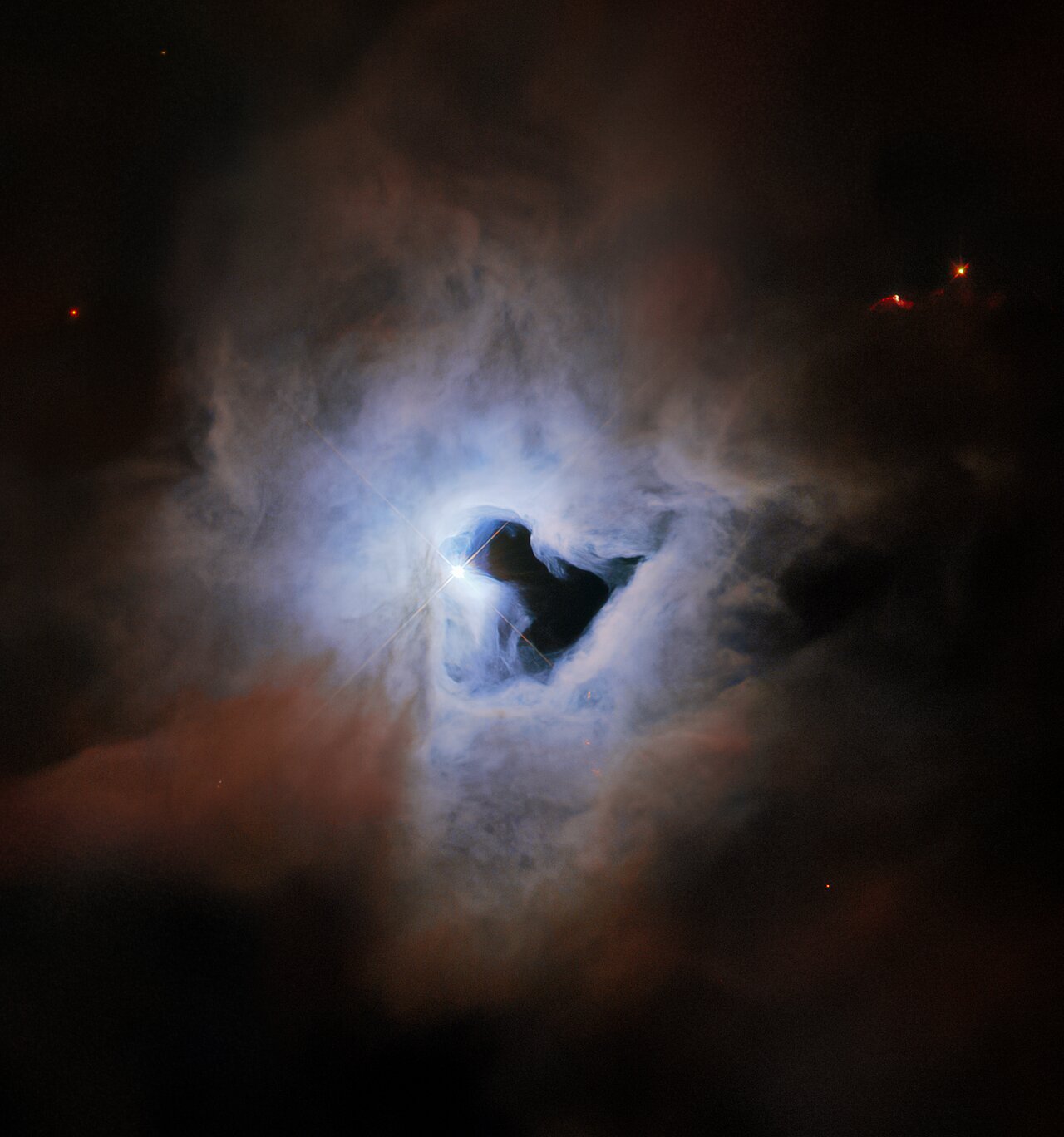It still remains unclear why the dark area of space in the middle is empty.
What secrets does the universe hold? That’s a pretty big question, and the truth is we, the human race, are in the infancy of uncovering what is out there. In our quest for knowledge and exploration, the Hubble space telescope is our faithful companion. In operation for three decades, Hubble has helped us see the universe in its true colors. It has also helped us see some of the most distant regions in space. But more importantly, it has shown us that outer space is full of beauty and magic. The latest observations are proof of that. The Hubble space telescope turned its powerful cameras to a star-forming region not far from Earth.
Cosmic Keyhole

Not far from the Orion Nebula, Hubble gazed upon a region described by experts as a “cosmic keyhole.” This is what is referred to as a reflection nebula, which is made of debris left over from the formation of a star. Or, in this case, a multi-star system called V380 Orionis. You’re looking at a ghostly celestial object called NGC 1999. It is located about 1,350 light-years away from Earth, not far from the Orion Nebula. This is the closest star factory of its kind to us. An empty space is actually visible in the middle of the reflection nebula. Scientists initially believed it was a Bok globule – a cloud of gas, molecules, and dust that appears to block light.
A combined effort
Around the cosmic “keyhole,” we can see dust reflecting light from the star V380 Orionis, which can be seen near its center. This is why it is called a reflection nebula. Several space agencies describe the cloud as “like mist curling around a streetlight,” but the reason for the gigantic hole in the middle remains a mystery. The image was first captured by Hubble’s Wide Field Planetary Camera 2 in 1999, and it is the subject of follow-up observations by telescopes, including Herschel, an ESA project. The final image and its story are truly the results of the combined efforts of many instruments. With more than 30 years of experience in capturing the stars and galaxies around us, Hubble continues to help scientists deepen their understanding of the universe.





